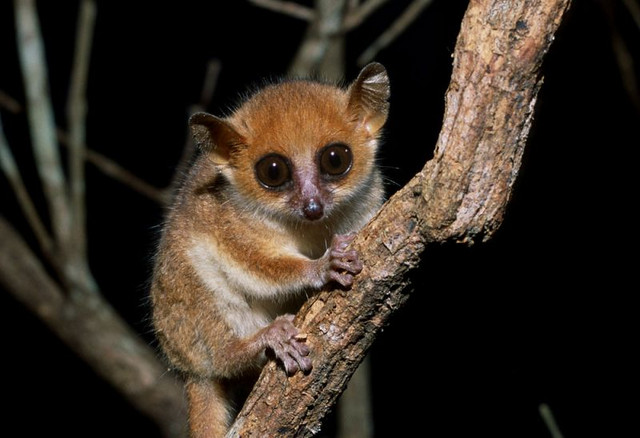Smallest primate in the world threatened with extinction
According to the Red List, 94 percent of all scientifically described lemur species are currently threatened with extinction. Reasons for this alarming situation are especially the increasing destruction of their habitat due to the clearing of large forest areas as well as hunting by an increasing impoverished population.
With the help of new genetic analyses, more than 20 new species of lemurs were discovered in recent years. One of the discoveries, the Goodman-mouse lemur (Microcebus lehilahytsara), which was described by the DPZ researchers Peter Kappeler and Christian Roos in 2005 is currently registered on the Red List as an endangered species. Also listed as endangered is the smallest known primate in the world. With a weight 30g, DPZ scientists discovered Madame Berthe’s mouse lemur (Microcebus berthae) in 1993 on its Malagasy field station in Forêt de Kirindy. Due to the continuous habitat destruction, the latest population estimates are once again outdated. The Microcebus berthae is one of the most endangered lemurs.
DPZ scientists have been working with Lemures for several years. In addition to the most famous species, the ring-tailed lemurs (Lemur catta), the Black-and-white ruffed lemurs (Varecia variegata) and the gray mouse lemurs (Microcebus murinus) are also kept and used primarily for cognitive biological research. In addition, the DPZ operates a field station in Madagascar since 1993. There, the scientists investigate the behavior as well as the ecology and biodiversity of eight lemur species, six of which were classified as highly threatened with extinction. The research results of DPZ employees have contributed substantially to the updating of the level of threat of the various species.
For further information regarding the latest update of the Red List, please refer to the IUCN website.

